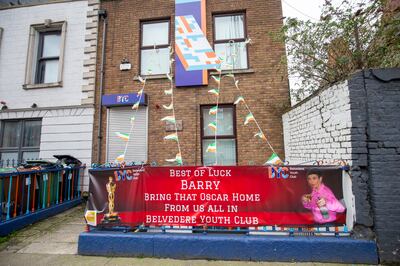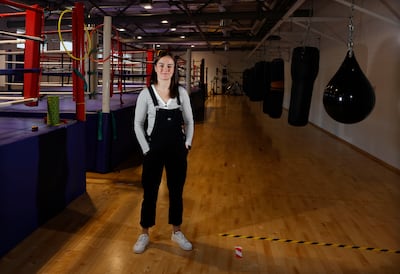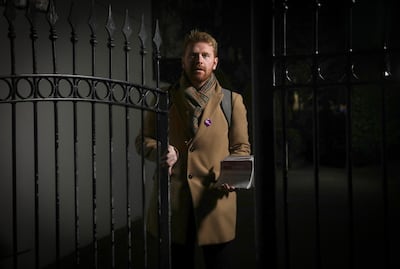Before the coronavirus pandemic, the vast majority of young people in Belvedere Youth Club in Dublin’s north inner city would have been white. Now more than a third come from immigrant backgrounds.
James Bowes (59), a youth worker at the Buckingham Street club, says in recent months young people have been coming in expressing concerns about immigration and asylum seekers.
“Young people may have fears, and the ones who may have fears may have been listening to different narratives,” he says.
The club tries to “unpack” the issue by allowing young people to ask questions, talk about the topic in a group, while providing information and then letting them think for themselves, he says.
RM Block
“We let the young people have the conversation around that and nine times out of 10, the young people will go ‘Well, live and let live’,” he says.
“We listen to them and we put them in the shoes of the refugee, help them to empathise, and by helping them to empathise it gives them a much bigger understanding of the whole thing,” says Bowes.
It is important teenagers and the wider community are not talked down to when raising concerns they might have about inward immigration, he says.
“When you look at what’s happening in the country about the lack of housing, there is real fears there,” he says. The root cause of that concern was usually that “someone is going to get my house” over me, says Bowes.
The youth club, which counts actor Barry Keoghan and Irish footballer Troy Parrott as past members, runs activities for nearly 500 young people.
Several years ago they would have been predominantly white Irish kids, but today 35-40 per cent come from other ethnic backgrounds, says Bowes.
“Just by having a conversation sometimes and being open and honest with each other, that’s a very powerful thing,” he adds.

He finds teenagers are much more willing to change their views on a topic than older generations when they have had a chance to talk it through.
The inner city became one of the most prominent flashpoints in the State’s efforts to house refugees, with large protests over asylum seekers being accommodated in a former office building in East Wall last November.
Then, in late January, a fire was started in an old building on Sherrard Street, following misinformation spread online that the property was due to be used to house asylum seekers.
A post in one local community Facebook group at the time claimed “200 refugees” were to be put into the building in the coming days.
The Department of Integration, which is responsible for accommodating Ukrainian refugees and asylum seekers from other countries, said the building had not been contracted for use as accommodation.

In recent days Olympic gold medal-winning boxer Kellie Harrington had to release a statement clarifying her views on asylum seekers, following criticism of her previously retweeting a video that featured anti-immigration rhetoric on Twitter.
Harrington, who is from Portland Row in the inner city, said she deleted the post shortly afterwards last October, when she realised the hurt caused by it.
The boxer said throughout her life she had been “lucky enough to have had many multicultural influences” and as a sportswoman was “all about community, inclusion and diversity”.
Paul Dixon (50), a neighbour living on the same street, this week said he believed the Olympic champion had been “unfairly treated” in the media.
“She’s a sportsperson, she’s not a politician. They wouldn’t ask Leo Varadkar or Micheál Martin about sport. She’s a local legend around here. All her life she’s been doing good,” he says.
The north inner city was “the most welcom[ing] area ever”, where immigrants had been part of the fabric of the community for years, he says.
“Even before asylum seekers there’s people from the country that was here. If I go down to Kerry with a Dublin jersey I’ll probably be slagged, but if a fella walks down here with a Kerry jersey, it would be ‘Hello’,” says Dixon.
The Government needs to put asylum seekers arriving in the country somewhere, but there is also a need to “look after your own”, he says.
“We all look after each other. My local mechanic is from Nigeria; we’ve no problem with them. They’re all here integrated years, 20 years. It’s only the press is putting a big thing on it now,” he says.
When it comes to teenagers, you understand teenagers wherever they are, they may say something, but it’s not something big to us, we take it like banter
— Shop worker Osman Hussein (32)
Nearby, Osman Hussein (32) is working behind the counter of his uncle’s shop, Al Huda grocery store in Summerhill, having arrived in Ireland from Somalia six months ago.
“From my personal experience I’ve never experienced any racism. The people are more friendly, more welcoming, especially the elders,” he says.
“When it comes to teenagers, you understand teenagers wherever they are, they may say something, but it’s not something big to us, we take it like banter,” says Hussein.
While there had been a number of protests over the housing of asylum seekers in the community, it is not something that bothers him.
People were facing a cost-of-living and housing crisis and were angry at the Government, with asylum seekers and immigrants “caught in the middle” of peoples’ frustrations, he says.
Out walking the dog you get to meet a lot of them, and I have to say they are very nice people. You feel sorry for them. They’re displaced from their own homes
— A local woman
Stopping to have a cigarette on Buckingham Street, local resident Joe Daly (60) feels the country is being “abused” and is taking in “too many” asylum seekers at one time.
Some people are “very uncomfortable” about the influx of asylum seekers and immigrants into Ireland, he says. Daly says he is “fortunate” to have his own home, but has concerns that Irish people now are not being “prioritised” for housing.
Another local walking her dog on Portland Row takes the view that asylum seekers “have to be somewhere” and need a place of safety.
“Out walking the dog you get to meet a lot of them, and I have to say they are very nice people. You feel sorry for them. They’re displaced from their own homes,” she says.
Communication between the Government and local communities could be better, she says. “If they just said, ‘We’re borrowing this building for x amount of months; we just need to house them’, people wouldn’t have a problem,” she says.

Local TD Gary Gannon says during the height of protests in East Wall late last year, his office was receiving 50 queries a day about asylum seekers being placed in the area.
The Social Democrats TD, who grew up on Sheriff Street, says a lot of fear was “whipped up” on social media, with huge amounts of misinformation circulating in those initial weeks.
“That has dropped off significantly ... A lot of what was said was proven to not be true,” he says. “People at the front of those protests wanted to build up their profile on the back of human misery.”
Locals in most cases wanted reassurances but had been met with an information vacuum, he says. The department’s handling of the matter during the period was an “absolute joke”.
“It was not really communicated at all, even to local representatives, which was a really bad approach,” he says. The attitude of officials had been “dismissive” at a time when residents had questions and wanted “to feel included and involved”, he says.
There has to be a space for difficult conversations … I would have had the same conversations with many people, with my mother
— Social Democrats TD Gary Gannon
Images of buses of asylum seekers being moved into the old office building “in the middle of the night” fed into narratives and misinformation being spread by malicious individuals, he says.
Harrington’s posts on Twitter came “at the height of that misinformation campaign”, says Gannon, who adds that the Olympic champion “may have had questions in the way a lot of people did” in the community.
It is important those with genuine questions or concerns are not shouted down, he says.
“There has to be a space for difficult conversations ... I would have had the same conversations with many people, with my mother,” he says.



















